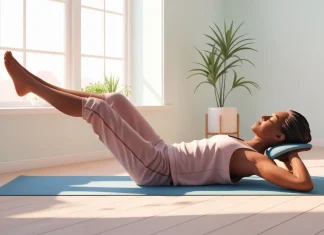Unlocking the Potential Within
Welcome to the world of Applied Behavior Analysis (ABA) Therapy – a transformative approach that has revolutionized the field of behavioral and developmental interventions. With its evidence-based techniques and compassionate methodologies, ABA Therapy has proven to be a guiding light for individuals with various behavioral challenges, most notably autism spectrum disorder (ASD). In this article, we will delve into the depths of ABA Therapy, exploring its core principles, effectiveness, applications, and future possibilities.
Understanding ABA Therapy
At its core, ABA Therapy is rooted in the belief that behavior is learned and can be modified through positive reinforcement and environmental manipulations. By carefully analyzing and understanding the relationship between behavior and its consequences, ABA therapists are able to design tailored interventions that foster positive changes in individuals’ lives. The therapy employs empirical data and systematic observations to bring about significant improvements in targeted behaviors.
The History and Development of ABA Therapy

The origins of ABA Therapy can be traced back to the early 20th century, gaining prominence in the 1960s and 1970s when researchers and practitioners pioneered groundbreaking techniques in behavior analysis. Notable figures such as B.F. Skinner and Ole Ivar Lovaas played pivotal roles in shaping the early landscape of ABA Therapy. Over time, the therapy evolved, incorporating sophisticated methodologies and technological advancements, propelling it to the forefront of behavioral interventions.
Key Techniques and Strategies in ABA Therapy
ABA Therapy employs a diverse set of techniques, all tailored to address specific behavioral challenges. Central to these techniques is the concept of positive reinforcement, where desired behaviors are rewarded to increase their occurrence. Techniques like behavior shaping, prompting, task analysis, and token economies are skillfully utilized to bring about lasting behavioral changes.
Applications of ABA Therapy
While ABA Therapy initially gained prominence as an effective treatment for individuals with autism, its applications have expanded to encompass a broad spectrum of developmental and behavioral disorders. Additionally, ABA Therapy has found its way into educational settings and workplaces, enhancing learning experiences and fostering professional growth.
Effectiveness and Benefits of ABA Therapy
Numerous research studies and success stories attest to the effectiveness of ABA Therapy. From improving communication and social skills to reducing maladaptive behaviors, the therapy has shown unparalleled benefits. Moreover, ABA Therapy stands out for its long-term impact and its ability to create lasting improvements in individuals’ lives.
Challenges and Criticisms of ABA Therapy
Despite its effectiveness, ABA Therapy is not without controversies. Ethical concerns and misconceptions have sparked debates within the field. It is essential to address these issues openly and honestly, striving for continuous improvement and better practices.
The Role of ABA Therapists
ABA Therapists are highly trained professionals equipped with the knowledge and expertise to create meaningful changes in the lives of their clients. Establishing a strong bond with their clients and their families is a crucial aspect of their role, as it fosters trust and collaboration throughout the therapeutic journey.
ABA Therapy and Early Intervention
Early intervention is a cornerstone of ABA Therapy’s success. By identifying and addressing behavioral challenges early on, ABA Therapy can significantly enhance developmental outcomes. Parents and caregivers play a pivotal role in this process, becoming active partners in their loved one’s progress.
Incorporating ABA Therapy into Daily Life
ABA Therapy extends beyond therapy sessions; its principles can be seamlessly integrated into daily routines. Parents and caregivers can adopt strategies to reinforce positive behaviors and create supportive environments that nurture growth and development.
The Future of ABA Therapy

With ongoing research and technological advancements, the future of ABA Therapy holds great promise. Innovations in virtual therapy platforms, data analysis, and individualized treatment plans are on the horizon, ensuring greater accessibility and efficacy.
Myths and Misconceptions about ABA Therapy
To fully appreciate the impact of ABA Therapy, it is crucial to debunk common myths and misconceptions that surround it. By dispelling these misunderstandings, we can better understand the true value and potential of this therapeutic approach.
Testimonials and Success Stories
Real-life accounts of individuals who have benefited from ABA Therapy showcase its profound impact. These inspiring success stories highlight the transformative power of ABA Therapy and the hope it brings to individuals and their families.
Considering ABA Therapy for Your Loved One
If you are considering ABA Therapy for your loved one, it’s essential to take certain factors into account. Finding qualified ABA Therapy providers and engaging in open discussions about the therapy can lead to informed decisions that pave the way for a brighter future.
Conclusion
Applied Behavior Analysis (ABA) Therapy is a beacon of hope for individuals facing behavioral challenges. Its evidence-based strategies, coupled with the compassion and dedication of ABA Therapists, have the potential to unlock hidden potentials and foster positive changes. Embracing ABA Therapy and understanding its intricacies empowers individuals, families, and communities to thrive and embrace a future filled with growth and opportunity.
FAQs (Frequently Asked Questions)
Is ABA Therapy only for individuals with autism? ABA Therapy was initially developed for individuals with autism, but its applications have expanded to various behavioral challenges.
How long does ABA Therapy typically last? The duration of ABA Therapy varies depending on individual needs, but it often involves consistent sessions over several months or years.
Are there any side effects of ABA Therapy? ABA Therapy is generally considered safe and does not have any harmful side effects.
Can parents be involved in ABA Therapy sessions? Parental involvement is encouraged in ABA Therapy, as it allows for better generalization of skills to everyday life.
Is ABA Therapy covered by insurance? Many insurance plans provide coverage for ABA Therapy, but it’s essential to check with the specific insurance provider for details.


























